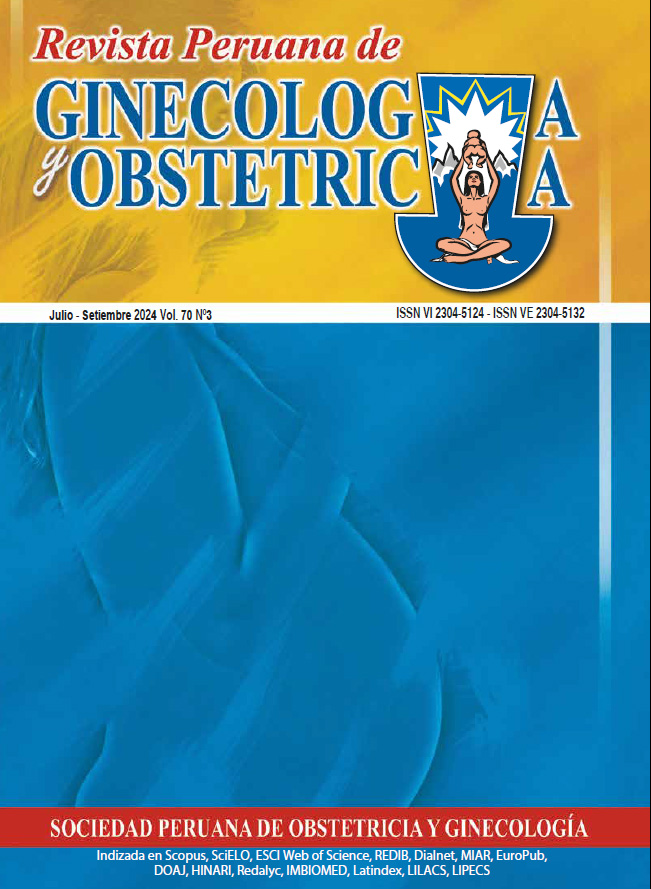Secondary postpartum hemorrhage caused by subinvolution of the placental site
DOI:
https://doi.org/10.31403/rpgo.v70i2667Keywords:
Postpartum hemorrhage, Placenta subinvolution, Placental extractsAbstract
Postpartum hemorrhage is a major cause of obstetric morbidity and mortality,
being associated with hemorrhagic shock and risk of disseminated intravascular
coagulopathy. Primary postpartum hemorrhage occurs within 24 hours of delivery
and cases classified as secondary occur after 24 hours and up to 6 weeks postpartum.
A rare cause of secondary postpartum hemorrhage is vascular subinvolution of
the placental implantation site. The underlying pathophysiological mechanism
is unknown. However, this condition is considered idiopathic and non-iatrogenic
because of its process of occurrence and development. Without other secondary
causes of postpartum hemorrhage, this condition is characterized by prolonged
and/or excessive uterine bleeding, which can lead to fulminant hemodynamic
collapse. The anatomopathological diagnosis is based on the finding of persistent,
patent, large, dilated and partially thrombus-occluded myometrial arteries, which
are adjacent to normally involuted vessels. Hysterectomy is the treatment for
cases of severe hemorrhage. The aim of the study is to present a case of secondary
postpartum hemorrhage caused by subinvolution of the placental site.
Downloads
Downloads
Published
How to Cite
Issue
Section
License
Copyright (c) 2024 Maira Sarmiento-Piña, Eduardo Reyna-Villasmil

This work is licensed under a Creative Commons Attribution 4.0 International License.
Esta revista provee acceso libre inmediato a su contenido bajo el principio de que hacer disponible gratuitamente la investigación al publico, lo cual fomenta un mayor intercambio de conocimiento global.















